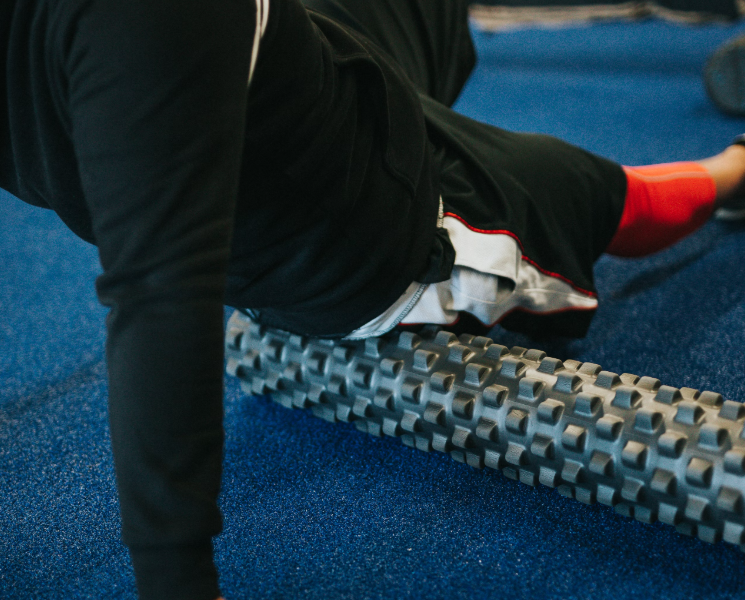Introduction to Yoga Straps
Yoga straps are one of the most overlooked yet essential tools in any flexibility or rehabilitation toolkit. Whether you’re a beginner struggling with tight hamstrings or a seasoned yogi deepening your stretches, the right strap can elevate your practice. But with so many options available, how do you know which one is right for you?

Why Flexibility and Stretching Matter
Stretching isn’t just about touching your toes. It’s a foundational element of physical health.
Benefits of Daily Stretching
Stretching promotes circulation, improves range of motion, reduces muscle stiffness, and prevents injuries. For desk workers or athletes alike, maintaining flexibility is key to overall mobility and comfort.
How Yoga Straps Help Improve Flexibility
Yoga straps act as extensions of your arms. They let you access deeper stretches without overstraining your muscles. Think of them as training wheels for your flexibility journey—offering support while you build strength and range.
Key Features to Look for in a Yoga Strap
Not all yoga straps are created equal. Here’s what separates a good strap from a great one.
Material Quality
Most straps are made from cotton, nylon, or polyester. Cotton feels softer but may stretch over time. Nylon and polyester offer better durability and minimal give.
Length and Adjustability
Standard straps range from 6 to 10 feet. Taller users or those aiming for advanced poses may prefer longer options. Some straps also offer adjustable lengths for added convenience.
Buckle or Loop Design
D-rings, cinch buckles, and loops all provide different ways to secure your grip. D-rings are versatile, while cinch buckles provide a firm lock during intense stretches.
Portability and Storage
Look for lightweight straps that roll up easily and don’t take up space in your gym bag.
Top 5 Best Yoga Straps for 2025
Let’s break down the top-rated yoga straps available this year and see which ones are worth your investment.
1. Manduka Unfold Yoga Strap
Features
- Made from eco-friendly cotton
- 8 feet long
- Lightweight with a secure plastic buckle
Pros and Cons
- Excellent for eco-conscious users
- Strong grip during stretches
- May fray after long-term use
2. Lululemon No Limits Strap
Features
- Sleek, minimalist design
- High-tension nylon material
- 6-foot length with fixed loops
Pros and Cons
- Stylish and compact
- Great for travel
- Limited adjustability
3. Tumaz Stretch Strap
Features
- Includes 10 individual loops
- Durable polyester blend
- Comes with a carry bag and guidebook
Pros and Cons
- Perfect for beginners
- Built-in loops simplify grip changes
- Less suitable for yoga purists
4. Gaiam Yoga Strap
Features
- Classic D-ring design
- 6 feet long
- Available in multiple colors
Pros and Cons
- Affordable
- Trusted brand for yoga gear
- Not the best for heavy resistance
5. Clever Yoga Strap
Features
- 100% organic cotton
- Extra-long 10-foot option
- Thick, reinforced stitching
Pros and Cons
- Ideal for tall users
- Strong, durable construction
- Bulky to carry around
How to Use a Yoga Strap Correctly
Even the best strap won’t help if you’re using it wrong.
Safety Tips
Always warm up before deep stretches. Avoid jerky movements, and listen to your body to prevent overstretching.
Best Practices for Stretching Routines
Start slow. Use the strap to hold positions longer rather than force flexibility. Breathe deeply into the stretch—this activates your parasympathetic nervous system and eases tension.
Comparing Budget vs Premium Yoga Straps
Does a $30 strap work better than a $10 one? Sometimes, yes.
Is It Worth Investing More?
Premium straps tend to last longer and feel more comfortable in hand. If you stretch daily or teach yoga, the added durability and support are worth the price.
Who Should Use Yoga Straps?
Yoga straps are universal tools with applications far beyond the yoga mat.
Beginners
Struggling with tight hamstrings or stiff shoulders? A strap helps you get into poses without strain or injury.
Seniors and Rehab Patients
For individuals recovering from surgery or managing mobility limitations, straps offer a gentle way to maintain flexibility without risk.
Athletes and Dancers
From runners to ballerinas, anyone with an active lifestyle can benefit from deeper, safer stretches aided by yoga straps.
Final Verdict: Which Strap Should You Choose?
If you want an all-around winner, Manduka Unfold delivers on quality and price. For travel, the Lululemon No Limits is compact and stylish. If you’re a beginner, the Tumaz Stretch Strap offers unmatched guidance with built-in loops.
Conclusion
Investing in a high-quality yoga strap is a small move that yields big flexibility gains. Whether you’re looking to improve posture, deepen your stretches, or prevent injury, a strap is a smart addition to your toolkit. Choose one that fits your needs, feels good in your hands, and motivates you to move every day.
FAQs
1. Can yoga straps really improve flexibility?
Yes. Yoga straps assist in deeper stretches and help you safely hold poses longer, gradually increasing flexibility.
2. How long should a yoga strap be?
Most users find 8 feet ideal. Taller individuals or those doing advanced poses may prefer a 10-foot strap.
3. Are yoga straps beginner-friendly?
Absolutely. They are especially helpful for beginners who can’t yet reach their toes or clasp their hands in certain poses.
4. What’s the difference between looped and unlooped straps?
Looped straps (like the Tumaz) offer fixed grip points for easier positioning, while unlooped ones allow more freedom in wrap techniques.
5. How often should I use a yoga strap?
You can use it daily as part of your warm-up, cool-down, or a dedicated stretching session. Just be consistent and gentle.

